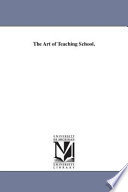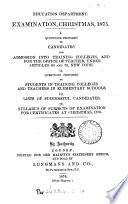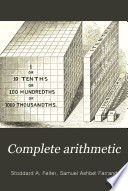 | Josiah Rhinehart Sypher - History - 1872 - 336 pages
...second terms of a proportion must be the same as the relation between the third a^id fourth terms. The product of the means is equal to the product of the extremes. A missing extreme may be found by dividing the product of the means by the given extreme. A mean may... | |
 | Josiah Rhinehart Sypher - Teaching - 1872 - 340 pages
...and second terms of a proportion must be the same as the relation between the third and fourth terms. The product of the means is equal to the product of the extremes. A missing extreme may be found by dividing the product of the means by the given extreme. A mean may... | |
 | Henry Bartlett Maglathlin - Arithmetic - 1873 - 362 pages
...between the other two. Thus, In 12 : 6 :: 6 : 3, 6 is a mean proportional. 328. 1. In every proportion the product of -the means is equal to the product of the extremes. For, in the proportion 6 : 3 : : 4 : 2, since the ratios are equal (Art. 326), we have f = -J- Now,... | |
 | William Guy Peck - Algebra - 1875 - 348 pages
...we have, bc — ad; (2) hence, the following principles: 1°. If four quantities are in proportion, the product of the means is equal to the product of the extremes. Conversely, if we divide both members of (2) by cq, we have, - = - ; or, a : b : : c : d ; hence, ac... | |
 | Education Department,London - 1876 - 1010 pages
...the area. SECTION X. 1. Define ratio and proportion. Shew that when four numbers are in proportion, the product of the means is equal to the product of the extremes. 3. State as precisely as possible your view« as to the value of Mental Arithmetic simply asan Educational... | |
 | William Guy Peck - Conic sections - 1876 - 412 pages
...said to • be transformed by division. PROPOSITION II. THEOREM. If four quantities are in proportion, the product of the means is equal to the product of the extremes. Assume the proportion, a : b :: c : d, whence - =- ; . . . (1) ac Multiplying both members of (1) by... | |
 | Stoddard A. Felter, Samuel Ashbel Farrand - Arithmetic - 1877 - 496 pages
...numerator by the other denominator, the products are equal. Hence, iu every proportion, PRINCIPLE I. — The product of the means is equal to the product of the extremes. If multiplying either the means or extremes together produces the same product, dividing this product... | |
 | William Frothingham Bradbury - Algebra - 1877 - 280 pages
...terms of a proportion are called the extremes, and the second and third the means. 106. In a proportion the product of the means is equal to the product of the extremes. Let a : b = с : d a с 6 = 5 Clearing of fractions, ad^bc A proportion is an equation ; and making... | |
 | Samuel Mecutchen, George Mornton Sayre - Arithmetic - 1877 - 200 pages
...of a proportion are called the Extremes, and the second and third terms the Means. In any proportion the product of the means is equal to the product of the extremes. Thus, in the proportion 4:8 :: 12:24, 8X12 = 4X24. A Simple Proportion expresses the equality of two... | |
 | William Guy Peck - Arithmetic - 1877 - 430 pages
...have equal denominators ; hence, their numerators are equal, that is, 5 x 8 = 2 x 20 ; in this case the product of the means is equal to the product of the extremes. But we can reason in like manner on any proportion ; hence, we have the following principle : 1°.... | |
| |